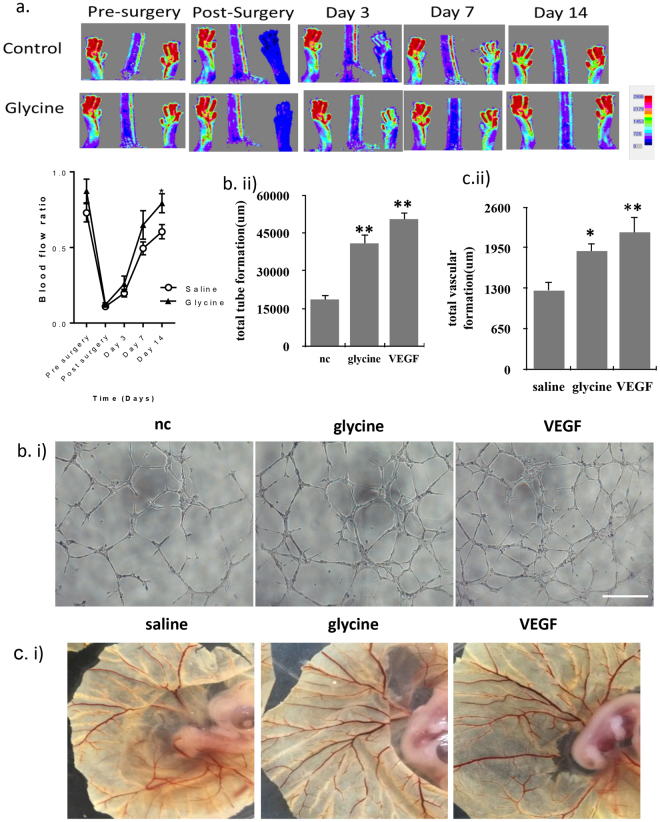Figure 2.
Glycine could promote the angiogenesis. (a) Hind-limb ischemia was created in C57 mice through femoral artery ligation. Upper: Serial laser Doppler analysis of blood perfusion in hindlimbs of mice injected with saline, glycine or VEGF at the day 3, 7 and 14. The concentration: 140 uM glycine and 20 ng/ml VEGF. The volume: 100 ul. Down: Quantitative analysis of blood flow using percentage of the ischemic limb relative to the control limb (n = 6). Results represented mean ± SEM of n independent experiments. **P < 0.01, *P < 0.05, 1-way ANOVA. (b) Representative images of in vitro tube formation in control, 140uM glycine or 20 ng/ml VEGF-treated ECs. Total sprouting length was indicated in the graph. Scale bar, 500 um (n = 5). (c) Representative images of the angiogenesis of saline, 140 uM glycine or 20 ng/ml VEGF-treated chorioallantoic membrane (CAM) (n = 6).

